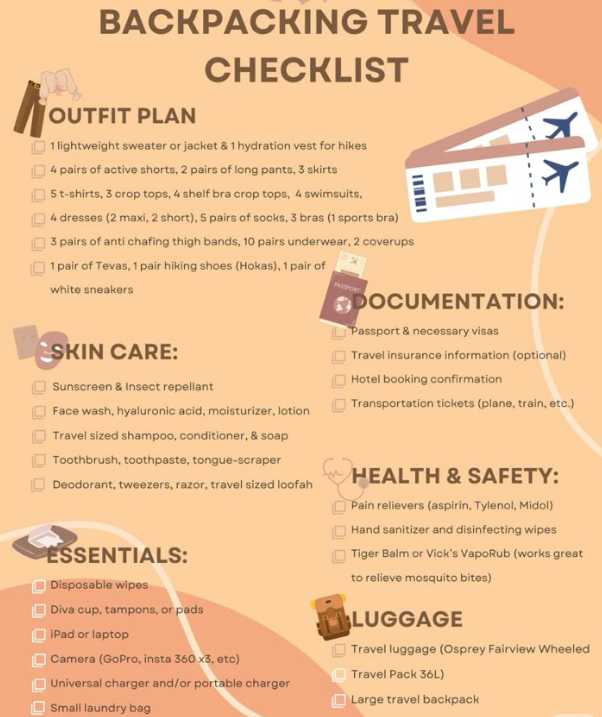If you crave raw landscapes, ancient cultures, and the kind of adventure that leaves stories etched in your memory — South Omo Valley is calling. Tucked deep in southern Ethiopia, this region is home to some of Africa’s most unique tribal communities, breathtaking wilderness, and off-the-grid travel experiences.
Whether you’re trekking through the savannas around Jinka, camping near the Omo River, or visiting the vibrant markets of Turmi, adventure travel in the Omo Valley offers something extraordinary. But before you set out, one thing matters just as much as your itinerary — the right travel backpack.
Let’s dive into how to prepare for an Omo Valley expedition, top adventure experiences, and what to pack for a trip through one of Africa’s last true frontiers.
Why South Omo Valley Is the Perfect Adventure Destination
The South Omo Valley is unlike anywhere else on Earth — a living museum of cultural diversity and wild beauty. It’s home to over 16 indigenous tribes, including the Hamar, Mursi, Nyangatom, Kara, and Banna. Travelers come here not just to observe but to experience — to connect with people, landscapes, and traditions that feel timeless.
Here’s what makes this region an adventurer’s dream:
Untamed Nature: From river valleys and grassy plains to acacia-dotted hills, Omo’s scenery changes dramatically every few kilometers.
Authentic Encounters: Witness traditional ceremonies, tribal markets, and village life far from tourist crowds.
Off-the-Beaten-Path Travel: Roads are rough, lodges are few, and every journey feels like exploration in its truest form.
Cultural Immersion & Photography: For photographers, anthropologists, and curious travelers, Jinka and its surroundings are endlessly fascinating.
Read Also: Top Cultural Festivals in Ethiopia’s Omo Valley (2025 Travel Guide)
Top Adventure Experiences in Jinka and South Omo Valley
1. Trekking Through the Mago National Park
Adventure seekers often base themselves in Jinka, the gateway to Mago National Park. The park is home to the famous Mursi tribe, known for their lip plates and distinct cultural expressions. Trekking through this park brings you face-to-face with diverse wildlife — including buffalos, giraffes, and countless bird species — against a backdrop of dramatic landscapes.
Tip: Wear lightweight trekking boots and carry a 30–40L backpack to store essentials, snacks, and camera gear.
2. Camping Along the Omo River
The Omo River is the lifeline of southern Ethiopia. Camping along its banks offers a rare opportunity to sleep under star-filled skies, listen to nature’s sounds, and experience life as the locals do. Many tours from Jinka include overnight camping, where you can cook local meals and interact with nearby tribes.
Adventure gear tip: A waterproof backpack with multiple compartments helps you keep essentials dry and accessible during river crossings or boat rides.
3. Cultural Village Expeditions
No adventure in the Omo Valley is complete without visiting the tribal villages. The Hamar tribe’s bull-jumping ceremony, the Kara’s intricate body painting, or the Banna’s traditional dance rituals are powerful cultural experiences. Exploring these remote settlements requires patience, respect, and curiosity.
Travel advice: Always travel with a local guide or operator who understands the language and customs — it enhances both safety and authenticity.
4. The Jinka Museum & Local Market
For travelers who enjoy cultural learning alongside adventure, the South Omo Research Center and Museum in Jinka is a must-visit. It showcases the history, traditions, and art of the region’s tribes. The Jinka market is another highlight, filled with handmade jewelry, woven baskets, and spices — ideal for travelers wanting to connect with locals and support artisans.
Choosing the Right Travel Backpack for Your Omo Valley Adventure
Adventure travel in Ethiopia’s Omo Valley means moving between different terrains — from dusty roads to rocky paths and humid riverbanks. That’s why your travel backpack is your most important piece of gear.
Here’s what to look for:
Key features to find in travel backpack.
Pro tip: Choose an earth-toned backpack (olive, tan, or brown) to blend naturally with the Omo landscape — both practical and photo-friendly.
Packing Essentials for Adventure Travel in Omo Valley
Pack light but smart. Here’s what every adventurer should carry:
Breathable clothing for hot days and cool evenings
Refillable water bottle or hydration bladder
Sturdy trekking shoes
First-aid kit and insect repellent
Camera and power bank
Lightweight rain jacket
Reusable utensils and eco-friendly toiletries
Sunscreen and wide-brimmed hat
Eco note: Respect the environment — avoid single-use plastics and minimize waste while visiting tribal regions.
Make it stand out
Whatever it is, the way you tell your story online can make all the difference.
Responsible & Sustainable Adventure Travel
Adventure travel in South Omo Valley comes with responsibility. Travelers are encouraged to respect local traditions, ask permission before photos, and support community-based tourism. Choosing eco-conscious tour operators and carrying reusable gear (like refillable bottles and biodegradable soap) helps preserve the fragile ecosystem and cultural heritage of the valley.
At ExploreOmo, our guided expeditions prioritize cultural respect and environmental sustainability, ensuring that your visit benefits both travelers and local communities.
Conclusion
The South Omo Valley isn’t just a destination — it’s an adventure into the roots of humanity, where culture and nature remain intertwined. From the rugged trails of Mago National Park to the vibrant energy of Jinka’s markets, this region challenges, inspires, and rewards every traveler who ventures here.
So, grab your backpack, pack your sense of wonder, and let ExploreOmo be your guide into Ethiopia’s wild heart — where every path tells a story.


